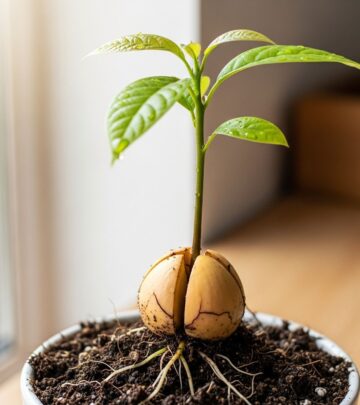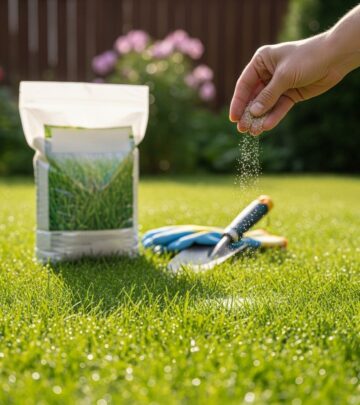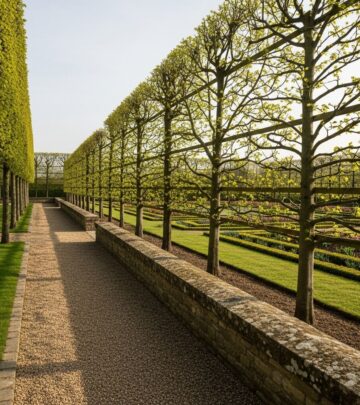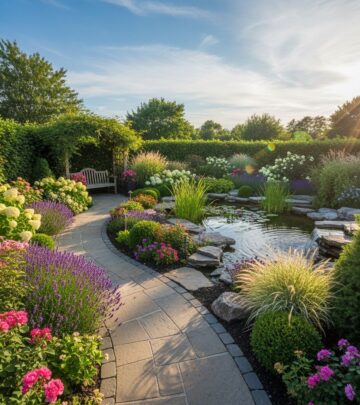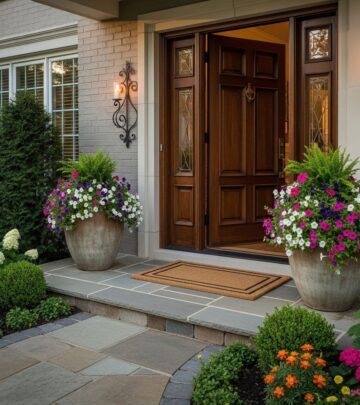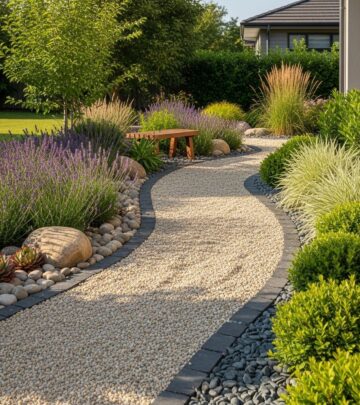Side Yard Landscaping Ideas: Transform Your Space With Expert Tips
Unlock the full potential of your side yard with creative landscaping ideas, functional design tips, and inspiring plant selections.

Side Yard Ideas, Landscaping, and Plants: Transform Your Overlooked Space
The side yard is often the most neglected—and underestimated—area in a home’s landscape. As property sizes shrink and outdoor living becomes more important, every square foot counts. Instead of letting your side yard become a forgotten strip or storage for trash bins, you can turn it into a vibrant, practical, and beautiful extension of your home. This guide will walk you through planning, designing, and planting your side yard, with creative ideas and expert advice for transforming even the narrowest spaces into something special.
Why Focus on the Side Yard?
Most attention in landscape design goes to the front and back yards, but the side yard often serves only as a passage between the two. Despite being typically narrow, shaded, and overlooked, with smart design, your side yard can become a functional retreat, a lush garden corridor, or an outdoor entertaining space.
Get Started: Assessing Your Side Yard
1. Evaluate Your Space
Begin by taking stock of your side yard’s size, dimensions, and existing features. Measure the length and width, note any slopes, and observe how sunlight changes throughout the day and seasons. Photograph the space from various angles for reference as you brainstorm design ideas.
- Is your side yard mostly sunny, shady, or a mix?
- Are there any existing trees, fences, or pathways?
- Are utilities (e.g., water meters, air conditioning units) in the way?
2. Consider the Function
Think about how you want to use your side yard. Is its primary purpose to provide access between the front and back yards, or do you have room for more? Here are some popular ideas:
- Garden beds for flowers, shrubs, or vegetables
- A small seating or dining area
- A fountain, birdbath, or water feature
- A barbecue grill or outdoor kitchen
- Storage shed or potting bench
- Children’s play area or dog run
- Private retreat or shaded nook
Deeply shaded side yards can become cool, tranquil retreats, especially during hot summers, while sunny side yards are ideal for vegetable or herb beds.
3. Look for Inspiration
Get inspired by browsing online galleries, visiting local gardens, or flipping through landscape design books. Notice how designers solve challenges similar to yours and what plant combinations or materials they use. Save photos or sketches of ideas you’d like to try.
4. Draw Up a Plan
For simple updates, a rough sketch of the layout may suffice. If you’re envisioning a more complex transformation, consider consulting a landscape designer. Your plan should include pathways, planting beds, focal points, and functional spaces.
5. Consider Scale and Style
- Scale: Choose materials and plants proportional to your space. Oversized elements can overwhelm a slim side yard.
- Style: Coordinate with your home’s architecture. Brick paths suit a colonial house, while concrete pavers fit a modern aesthetic.
Design Ideas for Side Yards
Go Vertical
Maximize limited square footage by using vertical space:
- Install trellises or arbors for vines and climbing plants.
- Mount vertical planters or green walls on fences.
- Hang window boxes or containers for annual color.
- Attach artwork, mirrors, or decorative screens to reflect light and add interest.
Creative Pathways
Traditional straight, narrow paths can make a slim side yard feel even more cramped—a phenomenon often called the “bowling alley effect.” Instead, consider:
- Widening the path to reduce a claustrophobic feel
- Adding gentle curves for a spacious illusion
- Using stepping stones, gravel, or pavers that complement your home’s style
Layered Planting
Layering is key to creating a lush feel in a tight space. Combine groundcovers, perennials, shrubs, and small trees, varying heights and textures for visual interest. Group plants in odd numbers and stagger them for a natural flow.
Add Focal Points
- Small sculptures, fountains, or bold containers draw the eye and anchor the design.
- Paintings or wall art murals can brighten dark fences.
- A specimen plant with colorful foliage or blooms can become the star.
Low-Maintenance Options
For an easy-care side yard, opt for:
- Drought-tolerant plants
- Gravel or mulch paths instead of grass
- Automated irrigation to reduce watering chores
- Sturdy groundcovers that suppress weeds
Privacy Solutions
If your side yard is visible to neighbors or the street, create a sense of seclusion with:
- Hedges or tall shrubs
- Trellises with climbing vines
- Decorative screens or bamboo fencing
Enhancing Small and Shady Side Yards
Embrace Shade
Many side yards are shaded by fences or structures. Make the most of these conditions with shade-loving plants such as hostas, ferns, astilbe, and heuchera. Add pops of color with containers of begonias, impatiens, or coleus.
Optical Tricks to Enlarge Space
- Use lighter colors for walls and fences to brighten the area.
- Hang mirrors or reflective decor to “double” the view.
- Choose open, airy furniture and avoid visual clutter.
Plant Ideas for Side Yards
Selecting the right plants is essential for a side yard that thrives and wows. Match your plant palette to sun/shade needs, soil type, and water availability. Here are some top choices:
| Light Requirement | Recommended Plants |
|---|---|
| Full Sun | Lavender, rosemary, ornamental grasses, sedums, agapanthus, daylilies |
| Partial Shade | Heuchera, Japanese forest grass, bleeding heart, foxglove, hydrangea |
| Full Shade | Hosta, ferns, astilbe, hellebore, brunnera, liriope |
- Groundcovers: Creeping thyme, ajuga, mondo grass, vinca minor
- Vertical elements: Climbing hydrangea, clematis, star jasmine, passionflower
- Containers: Annual flowers, herbs, compact shrubs, dwarf conifers
Materials and Features for Side Yards
Pathway Materials
- Stepping stones set in gravel or mulch
- Concrete pavers for a modern look
- Brick for classic charm
- Flagstone for a natural appearance
Functional Features
- Weatherproof benches or bistro sets for seating
- Storage solutions for bins, tools, and bikes
- Outdoor lighting for safety and ambiance
- Raised beds or vertical gardens for growing edibles
Enclosures and Boundaries
- Fencing for privacy and security
- Lattice panels with vines
- Living walls for screening and greenery
Tips for Success
- Think about year-round interest, including evergreens, bark, and winter berries.
- Layer lighting to highlight pathways and plants at night.
- Use decorative mulch or gravel to reduce maintenance and tidy the look.
- Group plants by water needs to simplify irrigation.
- Address drainage issues early with proper grading or French drains.
Side Yard Transformation: Project Examples
Take inspiration from these real-world side yard transformations:
- Lush, Layered Pathway: A narrow strip is widened with a curving path, bordered on one side by billowy perennials and the other by a privacy fence with climbing roses.
- Outdoor Retreat: A shady side yard becomes a cool oasis with a stone bench, hostas, ferns, and a gurgling fountain for white noise.
- Functional Corridor: Raised beds line a sunny side yard, growing herbs and vegetables just steps from the kitchen door.
- Children’s Play Zone: Artificial turf, low shrubs, and a climbing structure create a compact, safe play area.
Frequently Asked Questions (FAQs)
How can I brighten a narrow, shady side yard?
Choose plants with light-colored or variegated foliage such as hostas and ferns, incorporate outdoor lighting, use mirrors, and paint fences in bright hues to reflect more light.
What are some low-maintenance options for side yards?
Groundcovers like creeping thyme or mondo grass, drought-tolerant shrubs, gravel or mulch paths, and automated drip irrigation systems make maintenance easier.
How wide should a side yard path be?
A minimum width of 3 feet is recommended for single-person access, but if space allows, widen the walkway to at least 4–5 feet for a more comfortable, less claustrophobic route.
What are good plants for sunny side yards?
Lavender, rosemary, ornamental grasses, agapanthus, salvias, and sedums all thrive in full sun and provide color and texture.
How can I add privacy to my side yard?
Plant tall shrubs or hedges, install trellises with climbing vines, or add decorative fencing panels.
Conclusion
Don’t let your side yard become wasted space. With a thoughtful approach to function, style, and plant selection, you can create a side yard that’s not just a passageway, but a beautiful and useful part of your outdoor life. Take inspiration from creative ideas and enjoy a space that adds value, utility, and beauty to your home all year long.
References
Read full bio of Anjali Sayee





